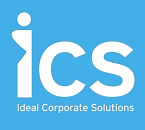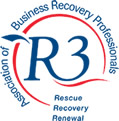Borrow more? What other options do businesses affected by covid have?
Jan 13, 2021

Borrow, borrow and borrow again. What can a business affected by covid do if it can’t or shouldn’t borrow more?
Let’s consider two possible scenarios where the company directors are also the business owners, a typical SME/OMB structure.
Company A has taken out a Bounce Back Loan (BBL) and spent it, then it has secured a Coronavirus Business Interruption Loan (CBIL) to repay the original BBL and provide further cash to the company, which it is working its way through.
Company B did the same as the above but was unable to qualify for a CBIL. However, if the directors were willing to provide a lender with personal guarantees, then the company could secure a new loan.
In both scenarios, there is no prospect of borrowing any more money without personal guarantees being provided by directors.
The companies had a decent trading period for the tax year 6 April 2019 to 5 April 2020, with only the last three weeks of the tax year being hampered by covid, however the remainder of 2020 has brought testing trading conditions and the amount of business transacted is significantly less than usual.
The directors didn’t make any personal tax payments in July 2020, with a larger balance falling due in January 2021. They each owe up to £30k in self-assessment tax.
The companies deferred their VAT liability for the quarter to June 2020, which is to be paid before 31 March 2021.
Also kicking in around late spring/early summer 2021 are the repayments of the CBIL (for Company A) and the BBL (for Company B).
Both companies have accumulated some rent arrears, with their landlords having been prevented from forfeiting the lease and evicting the companies from their premises under the measures put in place by the Government.
2020 has been very poor trading, Company B has minimal reserves and Company A has the balance of the unspent CBIL but that is running down. The directors are aware that there is a long way to go to get the businesses back to the level of trading pre-covid, reliant on customer confidence and consumer patterns returning to pre-covid levels.
It is now January 2021, what can the directors do?
- The self-assessment of up to £30k can be paid over 12 months, starting now
- The deferred VAT from 2020 can also be paid over 12 months, starting April 2021
- Rent arrears need to be repaid this year, from April 2021 the landlord can forfeit and evict
- The CBIL can be extended for up to 10 years but needs to start being paid this year
- The BBL also needs to start being paid this year
All the above are historic liabilities, which must be met in addition to the companies being able to cover all usual ongoing costs as and when they arise. Plus, not forgetting that as the directors earn their living through being paid dividends, money they use to cover their own personal living costs/wages, the companies need to generate the same profits as pre-covid whilst at the same time paying off the historic liabilities described.
Therefore, from future trading operations the companies must start to generate even more profit than was the case pre-covid in order for the directors to maintain their personal lifestyles as they were at the start of 2020. It is not good enough to simply return to the same pre-covid trading performance as the companies now have the historic and accumulated liabilities from 2020, including deferred HMRC debts, rent arrears and repayment of loans, to cover before the directors can legally withdraw their usual dividends.
If the companies are not able to generate a greater profit in 2021 than was the case pre-covid, then one of two things would happen:
- If director drawings continue at the “normal” level, there simply isn’t enough money around to pay the deferred debts, loan repayments and ongoing trading costs – therefore the company will run out of cash and any dividends drawn without sufficient reserves will be illegal (and need repaying by directors upon insolvency)
- The directors must reduce their dividends to a level which is legal (i.e. the new level of profits), which ensures all above costs are paid and the company remains solvent, but directors’ personal financial positions are significantly impacted through taking home less money than they did pre-covid and their families will therefore have to manage on less household income than before
So, borrow more or what?
Borrowing more through providing a lender with personal guarantees (PG) puts all directors at risk. If the companies cannot make the loan repayments then the lender will call on the PGs and the directors’ personal assets are at risk – note that the restrictions on PGs and enforcing over primary residence is only in respect of CBIL facilities, not any new, non-CBIL business loans. Moreover, directors ought not to obtain further funding for their companies if there is no reasonable prospect of it being repaid.
Non-borrowing option…
The companies are in the position they are through no fault of their own. They were trading perfectly profitably up to March 2020 when Government restrictions were imposed to deal with the coronavirus pandemic.
The outlook for 2021 appears that the companies will be able to continue their business however the pre-covid levels of trade will take some time to come back. Meanwhile, they are experiencing an unmanageable debt burden and, with the greatest will in the world, it doesn’t appear commercially viable to simply defer payment of all the various historic liabilities and loans (accumulated due to covid) over a significant number of years until repaid in full.
In the scenarios described, the CBIL and BBL are unsecured and have no personal guarantees. The deferred VAT is a company debt (albeit a preferential creditor on insolvency) but again no PG, the rent arrears is also unsecured and without personal liability. The underlying businesses are ultimately viable if freed from the loans and accumulated/deferred debts.
Insolvency Procedures – Don’t be afraid
The Insolvency Act 1986 includes a variety of tools and a number of statutory procedures, available to licensed insolvency practitioners, which help companies who are insolvent, who can’t pay their debts when they fall due and/or the value of its assets are less that the liabilities owed. We’ve briefly highlighted some of the tools here.
Through a CVA process, a company is able to propose a statutory solution to all its creditors to repay either all of its debts within a statutory framework or repay an agreed percentage, with the balance being written off. A CVA provides protection from all unsecured creditors taking enforcement action. The company continues to trade in its current form and manageable monthly payments are made for a defined period (typically up to a maximum of 5 years but could be sooner) – when all agreed payments have been made, the balance of the debts are written off and the company continues to trade into the future, free from debt.
Company Administration is a useful tool when companies are insolvent, they cannot repay all the debts owed however there is a viable underlying business going forwards if it didn’t have the historic debt burden to deal with. In an Administration, the Administrator will value a company’s business and assets and sell them on behalf of the Administration estate, getting the best possible value – typically the existing directors/owners, via a new company, would make the best offer to the Administrator and those parties acquire the business and assets to use in their new company to trade moving forwards, free from debt. Likewise, a similar outcome could be achieved through a Liquidation process albeit there are nuances between the two.
As of 2020, insolvency practitioners were given another statutory process to add to our toolkit, called a Moratorium. In a nutshell, this gives statutory protection to a company whilst a rescue strategy is put together and implemented, but it can only be commenced if the company is going to be rescued.
All statutory insolvency procedures mentioned above are complex and must be carried out by a licensed insolvency practitioner, who are subject to heavy regulation as well as compliance and ethical standards, which ensure that the rights of various stakeholders are protected and the best outcomes are achieved in any given circumstance.
At Ideal Corporate Solutions, both Tom and Andy are licensed and regulated to provide insolvency advice and handle all statutory insolvency procedures. There is a lot more to each of the processes mentioned however when engaged by companies to provide insolvency advice, we undertake a comprehensive review of the business, its financial information and take time to understand what everyone’s objectives are when we provide our assessment of options and formal advice to clients. If a formal insolvency procedure is not the best way forwards, we will tell you.
All initial advice is free of charge and we are not limited to any particular sector, size of business or geographical location (so long as its UK based). If you would like to have a free, no obligation chat to find out more about what you can and can’t do, as well as what all possible options look like for your business in 2021 – please don’t hesitate to get in touch with us.



